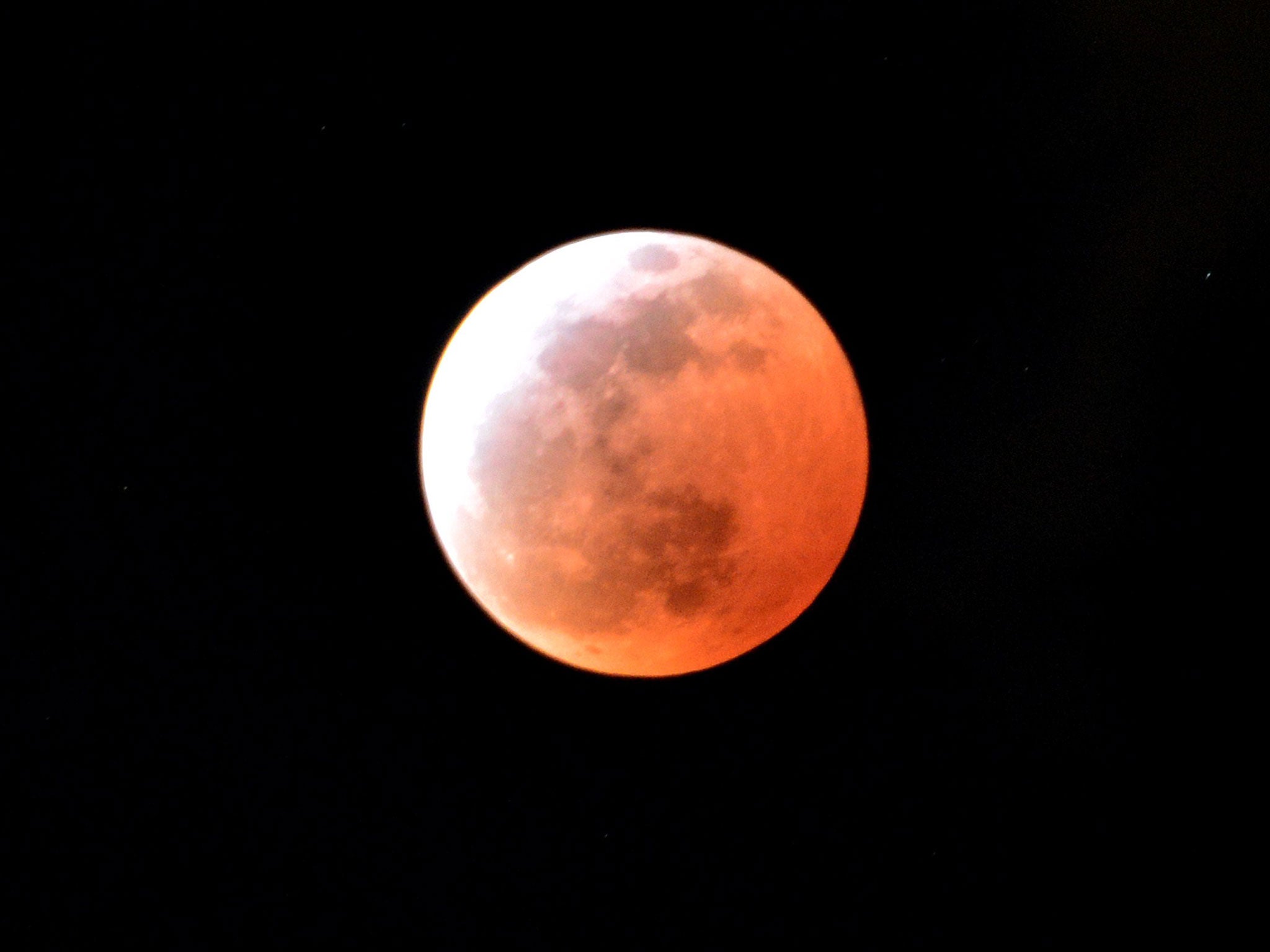Millions watch 'blood moon' rise in total lunar eclipse
Moon totally eclipsed for five minutes in shortest lunar eclipse this century

Your support helps us to tell the story
From reproductive rights to climate change to Big Tech, The Independent is on the ground when the story is developing. Whether it's investigating the financials of Elon Musk's pro-Trump PAC or producing our latest documentary, 'The A Word', which shines a light on the American women fighting for reproductive rights, we know how important it is to parse out the facts from the messaging.
At such a critical moment in US history, we need reporters on the ground. Your donation allows us to keep sending journalists to speak to both sides of the story.
The Independent is trusted by Americans across the entire political spectrum. And unlike many other quality news outlets, we choose not to lock Americans out of our reporting and analysis with paywalls. We believe quality journalism should be available to everyone, paid for by those who can afford it.
Your support makes all the difference.Millions of stargazers watched today's 'blood moon' in the shortest lunar eclipse this century.
A partial eclipse was visible to the entire united states as the moon entered Earth's shadow at 6.16am Eastern Daylight Saving Time - five hours behind Greenwich Mean Time - according to NASA.
Those west of the Mississippi river were expected to have the best views of the event in which the moon turned blood red before disappearing for five minutes in a total lunar eclipse.
It could also be viewed in parts of Asia and Australasia but couldn't be seen at all in Europe, Africa and the Middle East, but more than 13-million people watched NASA's live streaming of the event, filmed form the Marshall Space Flight Facility in Alabama.
This was the third lunar eclipse in a series of four, known as a tetrad. The first two were in April and September last year, with the final eclipse in the cycle on September 28 this year.
Even though the Earth completely blocks sunlight from directly reaching the surface of the Moon, it's still visible to the naked eye. The Earth's atmosphere refracts sunlight which lights up the moon's surface, but the atmosphere removes certain elements of the light spectrum, giving it the red colouring that millions witnessed today.
Join our commenting forum
Join thought-provoking conversations, follow other Independent readers and see their replies
Comments